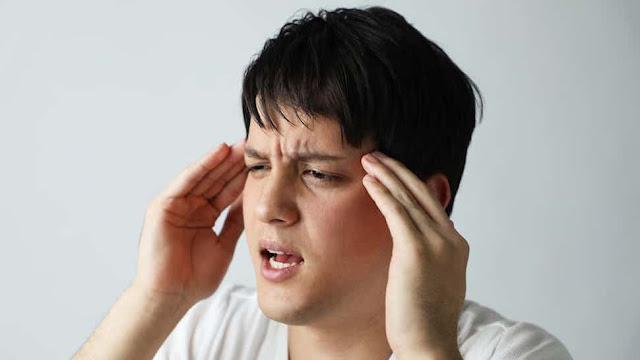Describe the types of delusions. Differentiate between delusions and hallucinations
DELUSIONAL DISORDER
Delusions are irrational beliefs, held with a high level of conviction, that are highly resistant to change even when the delusional person is exposed to forms of proof that contradict the belief. Non-bizarre delusions are considered to be plausible; that is, there is a possibility that what the person believes to be true could actually occur a small proportion of the time.
Conversely, bizarre delusions focus on matters that would be impossible in reality. For example, a non-bizarre delusion might be the belief that one’s activities are constantly under observation by federal law enforcement or intelligence agencies, which actually does occur for a small number of people. By contrast, a man who believes he is pregnant with German Shepherd puppies holds a belief that could never come to pass in reality. Also, for beliefs to be considered delusional, the content or themes of the beliefs must be uncommon in the person’s culture or religion. Generally, in delusional disorder, these mistaken beliefs are organised into a consistent world-view that is logical other than being based on an improbable foundation.
Dreams and fantasies are the two side effects of
psychological wellness issues that change an individual's view of the real
world. Be that as it may, while comparative, they are not something similar.
Understanding the distinctions between daydreams versus mind flights can be
useful in conclusion and treatment as well as in the administration of
emotional wellness conditions that cause these side effects.
Describe the types of
delusions. Differentiate between delusions and hallucinations
The psyche is a staggeringly useful asset. The cerebrum
directs mind-sets, contemplations, and ways of behaving, and makes people's
real factors. At the point when an emotional wellness condition creates, a
glitch in the cerebrum can happen. At the point when this occurs, the changes
in the cerebrum can cause errors between what is genuine and what is envisioned
in our regular day to day existences.
The two fancies and visualizations misshape reality in
manners that are unquestionably hard for an individual to comprehend. While
dreams can be a psychological instability all alone (Fanciful Turmoil),
daydreams and visualizations are in many cases a piece of a more serious issue.
Knowing the distinction between these two circumstances can assist you with
deciding the best game-plan.
Hallucinations are deceptions. Subsequently, an individual
encountering a dream will enduringly put stock in something that isn't correct.
Generally, these convictions endure in any event, when there is proof that they
are not genuine. Daydreams are alluded to as non-strange or peculiar in nature.
Instances of daydreams that are non-strange incorporate something that could
really occur, all things considered, similar to a bamboozling life partner.
Then again, instances of dreams that are odd incorporate things that would
never occur, in actuality, for example, the capacity to become undetectable.
ALSO READ:-
The Clinical Features And Etiology Of Dissociative Disorders
What is a hallucination?
A hallucination is a false perception of objects or events
involving your senses: sight, sound, smell, touch and taste. Hallucinations
seem real, but they’re not. Chemical reactions and/or abnormalities in
your brain cause hallucinations.
Hallucinations are typically a symptom of a psychosis-related
disorder, particularly schizophrenia, but they can also result from substance use,
neurological conditions and some temporary situations.
A person may experience a hallucination with or without the
insight that what they’re experiencing isn’t real. When a person thinks their
hallucination is real, it’s considered a psychotic symptom.
What is the difference
between a hallucination and a delusion?
A hallucination is a sensory
experience. It involves seeing, hearing, tasting, smelling or feeling something
that isn't there.
Delusions are unshakable beliefs in
something untrue. For example, they can involve someone thinking they have
special powers or they’re being poisoned despite strong evidence that these
beliefs aren’t true.
Sorts of Daydreams
There are various sorts of fancies yet silly reasoning by and
large follows designs. Hence, kinds of hallucinations are sorted by topic.
Preposterous topics include:
Vainglorious Hallucinations:
Side effects of vainglorious whimsical issue base on
convictions of prevalence. As such, the individual accepts they are superior to
other people.
Envious Dreams:
Envious dreams frequently spin around convictions of being
the casualty of an issue.
Erotomanic Daydreams:
An individual with erotomanic dreams trusts that a notable
individual (for instance, a VIP) is infatuated with them. This could be
innocuous or lead to ways of behaving like following.
Substantial Dreams:
Describe the types of
delusions. Differentiate between delusions and hallucinations
Individuals with substantial dreams accept they are
experiencing an ailment or parasitic disease that they don't have.
Persecutory Hallucinations:
This is believed to be the most widely recognized sort of
fancy. Persecutory hallucinations are distrustful in nature and incorporate
convictions like being kept an eye on. Then again, an individual could accept
others are on a mission to hurt them. Schizophrenic daydreams are most
frequently of a persecutory nature.
Capricious psychosis can be its very own state or could be a
side effect of another problem. Different circumstances that might cause dreams
include:
- Alzheimer's Sickness
- Dementia
- Cerebrum Injury
- Parkinson's Illness
- Preposterous Issues
- Schizophrenia
- State of mind Issues
- Substance Misuse
- Drug-Initiated Psychosis
Contingent upon the individual's convictions, hallucinating
considerations may not cause trouble. For instance, an individual with
Alzheimer's sickness might encounter dreams that don't be guaranteed to disturb
their life, for example, their having the option to speak with a departed
relative. On the other hand, somebody determined to have schizophrenia might
accept that they are being spied upon through the machines, which could turn
into a significant wellspring of stress in their life.
Mental trips are like daydreams as in they make an individual
vibe that they're experience something that didn't really occur. Nonetheless,
visualizations are not in light of convictions.
What Are Mental trips?
Mind flights are like daydreams, yet rather than fixating on
skepticisms, they include tactile misperceptions. That is, an individual will
feel, see, taste, hear, or smell something that isn't there. Like fancies,
visualizations are many times a side effect of a more extensive issue, yet can
likewise be brought about by situational conditions, for example, substance
misuse.
Sorts of Pipedreams
Fantasies influence your faculties and are sorted by such. In
this way, kinds of pipedreams include:
- Hear-able (hearing)
- Visual (seeing)
- Olfactory (smelling)
- Material (feeling)
- Gustatory (tasting)
Visualizations are made in the mind and are genuine to the
individual encountering them. Considering this, they can very trouble. Reasons
for pipedream are like those of daydreams. For instance, the psychological
maladjustment schizophrenia is a typical reason for fantasies. Likewise,
Parkinson's infection, Alzheimer's, dementia, epilepsy, and mind wounds are
additionally normal causes. Further, it is entirely to be expected for a going
through individual medication or liquor detox to hear, see, or feel things that
aren't genuine, which is one reason detoxing under clinical watch is so
vigorously suggested.
Describe the types of
delusions. Differentiate between delusions and hallucinations
Dreams versus Pipedreams Treatment
The treatment of either dreams or pipedreams will
extraordinarily rely upon the condition that is causing these breaks with the
real world. On the off chance that psychosis isn't obvious, mental social
treatment (CBT) is a typical way to deal with the treatment of fancies. CBT
offers the chance for the individual to address their fancies and to examine
substitute prospects about their doubts. This sort of treatment will be matched
with drug if important.
Fantasies are likewise treated with a blend of treatments. Be that as it may, prescription might be even more a first methodology assuming that the pipedream is attached to a psychological maladjustment or state of being. The sort of prescription utilized will rely upon the condition causing the mind flight.
In the event that substance misuse is causing dreams and
visualizations, an assessment by a clinical expert knowledgeable in both
emotional well-being and compulsion treatment is in many cases the initial
step.
Emotional wellness Help in Louisiana
Daydreams and mental trips can be disturbing to those
encountering them as well regarding people around them. At Mallet Rouge Social
Clinic, our treatment group is knowledgeable in balancing out patients who are
encountering mind flights and fancies no matter what the seriousness.
At our Louisiana emotional wellness emergency clinic, we
offer grown-up mental projects in both ongoing and short term designs. What's
more, we offer a double determination program to address any going with habit
and can aid emergency adjustment. At Twirly doo Rouge Emergency clinic we
comprehend that no two patients are something similar, and we give individualized
choices to take care of your recuperation needs..
ALSO READ:-
The Purpose And Approaches To The Classification Of Psychopathology
Important Questions
1) Define
paranoia and delineate its characteristic features.
2) What are
the symptoms of paranoi and what are its causes?
3) What are
delusional disorders?
4) Describe in detail the delusional disorder of grandeur and persecution
·
the main difference between
hallucinations and delusions is that quizlet
·
difference between hallucination and illusion and delusion
·
hallucinations and delusions are symptoms of
·
illusion vs delusion vs hallucination examples
·
hallucination vs delusion examples
·
hallucinations vs delusions schizophrenia








0 comments:
Note: Only a member of this blog may post a comment.